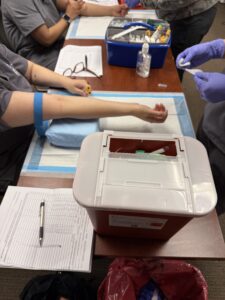Class Calendar | Call admissions on 415-943-2028
Get free phlebotomy training—exclusively for eligible Amazon Associates / Find MA training at BAMA
Class Calendar | Call admissions on 415-943-2028

If you’re considering a career in healthcare, enrolling in phlebotomy classes is a great place to start. But before diving in, many prospective students ask the same question: Are phlebotomy classes hard? The answer varies depending on your learning style and dedication—but with the right mindset and support, they’re very achievable.
Phlebotomy classes combine both classroom instruction and hands-on lab training. During a comprehensive course, students learn essential skills such as:
You’ll also gain experience using real equipment like tourniquets, needles, collection tubes, and personal protective gear. These are vital for becoming confident and competent on the job.
For many, phlebotomy classes are manageable, even without a healthcare background. The subject matter is presented in an accessible way, and most programs assume no prior medical knowledge. That said, the courses are fast-paced. You’ll need to dedicate time to studying and practicing your technique. If you’re willing to put in the effort, you’ll find the material rewarding rather than overwhelming.
While phlebotomy classes aren’t usually considered “hard” in a traditional academic sense, they do come with unique challenges:
Overcoming these challenges builds confidence and prepares you for the real-world responsibilities of a phlebotomist.
To make the most of your phlebotomy classes, keep these tips in mind:
The more effort you put in, the more prepared you’ll be for your certification exam and future employment.
If you’re searching for a place where you can thrive academically and professionally, phlebotomy classes at BAMA Institute are a perfect choice. We provide a nurturing learning environment where every student receives personalized attention. Our staff, instructors, and administrators know every student by their first name, ensuring a welcoming and supportive experience.
At BAMA Institute, we structure our classes for maximum hands-on learning. We also offer additional coaching and lab practice hours for students who need extra help. We make becoming a phlebotomist manageable for anyone—regardless of background—by offering the tools, support, and encouragement needed to succeed. We don’t just prepare students for entry into the medical field—we form lasting connections with each of them and support their professional journeys long after graduation. Contact us today to learn more about our phlebotomy classes and how we can help you succeed in your healthcare career.
"*" indicates required fields
© 2024 BAMA Institute. All Rights Reserved. Website by WindsAndWater